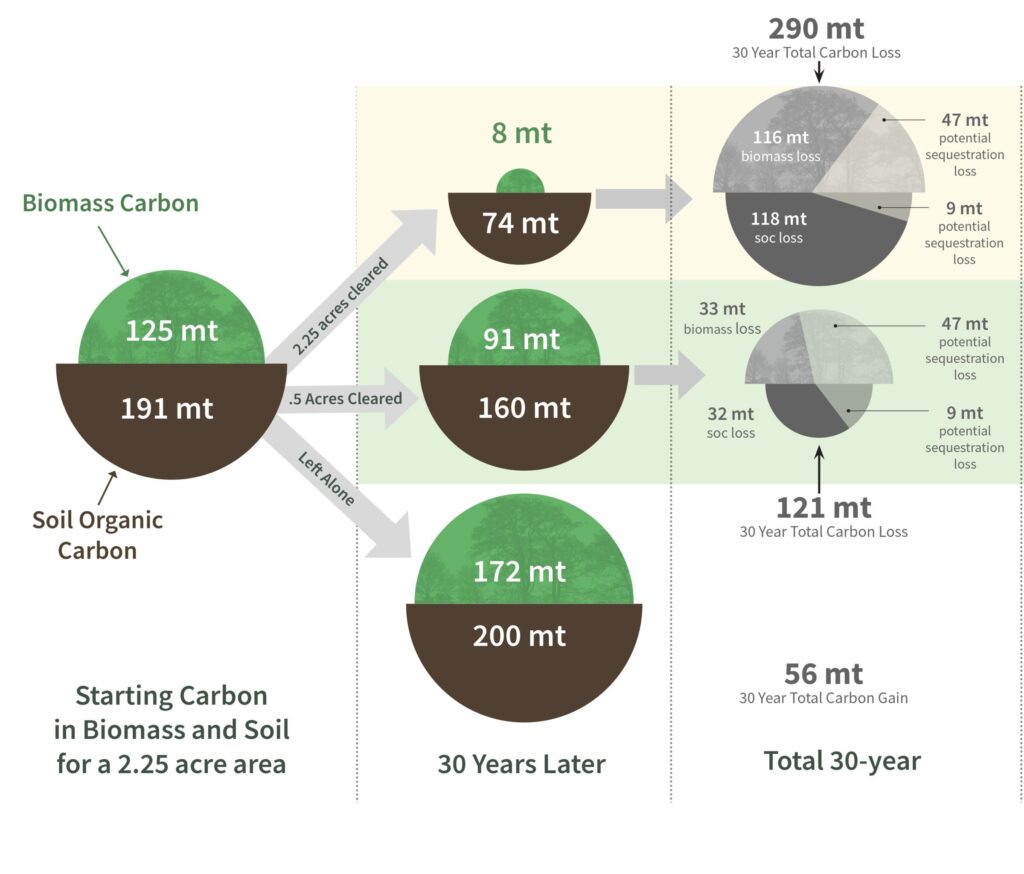
New MA Healthy Soils Guide for Site Design + Construction is Live
Guide offers practical soil health strategies for design and construction professionals, best practices for reducing net carbon emissions of development projects
GREENFIELD, MA — The Massachusetts Healthy Soils Guide for Site Design and Construction is now live at masshealthysoils.org. Developed by the Regenerative Design Group and its collaborators, with support from the Massachusetts Executive Office of Energy and Environmental Affairs, this online guide provides practical, site-specific strategies for protecting and enhancing soil health, as well as increasing carbon sequestration, throughout all phases of land development.

Soil health is vital to climate resilience, food security, and ecosystem function—but it’s often overlooked in conventional construction practices, both residential and commercial. “Landscapes are the only element of the built environment that have the potential to provide ongoing carbon sequestration after the completion of a project,” said Rachel Lindsay, Senior Designer at Regenerative Design Group. “This guide provides clear, actionable guidance on how typical activities such as excavation or soil stockpiling can be adjusted to better protect and maximize the amount of soil organic carbon retained throughout the construction process.”
The Massachusetts Healthy Soils Action Plan (HSAP), the state’s first-in-the-nation framework for protecting and restoring soil function across all land uses, identifies Soil Organic Carbon (SOC) as the cornerstone of healthy soil functions. The living carbon component of soil increases drought resilience, mitigates flooding, filters sediments and pollutants, and supports vigorous plant and tree growth. “Preserving and enhancing healthy soils during the construction process may have the greatest positive impact on the long-term health of the soil and soil organic carbon accumulation over the life of the project,” states Lindsay.
Every time soil is disturbed, SOC is transformed into carbon dioxide and lost back into the air. The building sector is the second-largest source of greenhouse gas emissions in Massachusetts, accounting for 35 percent (OEEA 2022). The difference developers and construction professionals can make is significant: there is roughly twice the amount of land in turf and ornamental landscapes in Massachusetts as agricultural land. Small shifts in design and management practices—such as planting 25% of open lawn with trees, and increasing organic matter content in the top 8” of lawns to a minimum of 3%—could sequester an additional 180,000 tons of carbon dioxide equivalent per year, the same as taking over 38,000 gas-powered passenger vehicles off the road.

The Healthy Soils Guide for Site Design and Construction offers tools and strategies for implementing “soil-smart” practices that improve healthy soil outcomes before, during, and after construction projects. The website also features access to the full HSAP, a curated resource library, events, and industry engagement and adaptation efforts. Over 360,000 additional acres of soil in Massachusetts may be impacted by development over the next 35 years, a critical period that could impact the trajectory of net carbon emissions in the State.
“This guide is designed to meet professionals where they are—whether they’re managing a construction site, developing soil specifications, or planning a resilient landscape,” said Lindsay. “It’s about making soil health easier to understand and implement across real-world projects.”
The guide is the result of a multi-firm collaboration led by Regenerative Design Group, Linnean Solutions, BSC Group, and Sasaki, with industry support from A.D. Makepeace, Read Custom Soils, and others. Funding was made possible through a $99,900 Healthy Soils Challenge Grant from the Massachusetts Executive Office of Energy and Environmental Affairs.



Comments (0)